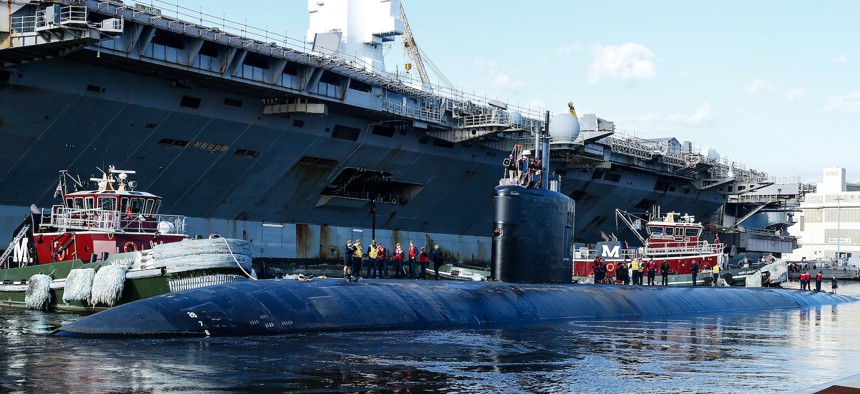
USS Pasadena (SSN 752) returned to the fleet Oct. 31 following successful completion of its Drydocking Selected Restricted Availability (DSRA) at Norfolk Naval Shipyard (NNSY). U.S. Navy / Aldo Anderson
Fix Navy Infrastructure’s ‘Worst Problems’ First, Secretary Says
Carlos Del Toro orders up a 30-year roadmap for modernization.
The Navy secretary has asked for a multi-year plan to address the department’s most pressing infrastructure problems and identify long-term priorities.
“I've tasked my staff at the Department of Navy to put together a 30-year infrastructure plan, just like the shipbuilding plan, so that we can take a long-term, medium-term, short-term view on what our highest priorities are in the Department of the Navy so that we can actually get real about the challenges…that we face in order to get better,” Carlos Del Toro said during a speech Thursday at the West 2023 conference in San Diego.
Navy and Marine Corps infrastructure has been neglected “for decades across different types of administrations,” Del Toro told reporters after his speech.
“I mean, in many cases we sort of kick the can down the road, right, in making difficult decisions, and they are difficult decisions… But too often, sometimes we—it's a trade-off between a shiny new toy somewhere and the decision to invest either in a Red Hill-type of environment or a dry dock,” he said.
Del Toro also highlighted the Navy’s Shipyard Infrastructure Optimization Program, SIOP—an effort to “reconfigure, modernize, and optimize” the aging four public shipyards, according to its official website.
“Our dry docks are over 100 years old. Our shipyards in many cases, the infrastructure in those shipyards hasn't been upgraded in 65 years,” Del Toro told the audience. “If we're going to get better as a Navy, as a military, as a nation, we've got to get real about the infrastructure problems that we face.”
The 30-year infrastructure plan will involve “everything” from piers to bases, Del Toro told reporters.
“It’s about identifying what the worst problems are, right? And trying to address those worst problems first so that they don’t become catastrophic,” Del Toro said. “It's about trying to minimize risk across the entire spectrum of investments that have to be made.”
The Navy will use data to help determine the most pressing needs, and that will also allow them to make investments that benefit the American taxpayer and the troops, the secretary said. Without the right investment in infrastructure, he said, “our combat readiness suffers as well too. In different ways, but it suffers.”
Del Toro cited the decision last month to close four submarine dry docks in Washington State that are at risk of earthquake damage as an example of how the Navy could use the plan.
“These were analyses that were done several years ago now, take a look at the structures of all our drydocks, basically, and try to determine where challenges may present themselves, especially with increased seismic activity in the Puget Sound area,” he said.
The secretary said he has no timeline on when the infrastructure plan will be released, but it could be used to develop the Program Objective Memorandum, or POM, for 2025 and 2026 and later. The department will decide when to share the plan with Congress to get their support, he said.


